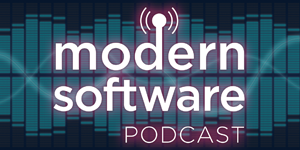 When ScribbleLive added New Relic, the marketing-technology and content-creation company was able to see and fix issues that used to take days—or longer—to resolve. Even more important, though, ScribbleLive has customized New Relic to use that rich performance data to spark meaningful conversations throughout the business, from customer success managers to the C-suite. Installing and optimizing New Relic was a key step towards everything from reducing churn to transforming engineering from a cost center into a thought leader within the ScribbleLive organization.
When ScribbleLive added New Relic, the marketing-technology and content-creation company was able to see and fix issues that used to take days—or longer—to resolve. Even more important, though, ScribbleLive has customized New Relic to use that rich performance data to spark meaningful conversations throughout the business, from customer success managers to the C-suite. Installing and optimizing New Relic was a key step towards everything from reducing churn to transforming engineering from a cost center into a thought leader within the ScribbleLive organization.
Those are just a couple of the key points that Steve Henry, ScribbleLive’s vice president and head of engineering, shares in the latest episode of the New Relic Modern Software Podcast. Steve takes me and this episode’s co-host, New Relic’s Senior Director of Customer Marketing Cynthia Hester, on a revealing journey into ScribbleLive’s quest to better understand what’s happening in its platform, so they can share that knowledge with stakeholders throughout the company—and even customers!
You can listen to the full episode right here or get all the episodes by subscribing to the New Relic Modern Software Podcast on iTunes, or wherever you get your podcasts. Read on below for a full transcript of our conversation, edited for clarity:
New Relic was the host of the attached forum presented in the embedded podcast. However, the content and views expressed are those of the participants and do not necessarily reflect the views of New Relic. By hosting the podcast, New Relic does not necessarily adopt, guarantee, approve, or endorse the information, views, or products referenced therein.
Fredric Paul: So, Steve, how long have you been at ScribbleLive?
Steve Henry: I've been at ScribbleLive for a year now. I look after our global engineering teams. We've been going through a lot of changes over the last year, trying to figure out as we've consolidated a number of entities under us: What are our core platforms? How do we really want to go to market with them? And how do we really understand what's happening on these platforms as we drive towards having a more integrated solution to offer our customers?
Fredric: To put that in context, tell us a little more about ScribbleLive.
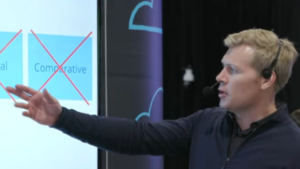
Steve: In the martech space, we really start at content creation. So, we have a talent marketplace of 1,500 vetted content creators who can do everything: infographics, videos, copywriting. We have a collaboration platform—kind of like Asana, but specifically tailored to content creation—and a couple of publishing platforms as well. Think of it like a content management system (CMS), but specializing in interactive content that drives people further through the marketing funnel so you can really engage with your audience.
And then all the data and analytics that come out of that, so you can really see: How is my content performing? How am I engaging with my audience? And what's my ROI on this? Why am I investing in this in the first place?
Leveraging engineering data across ScribbleLive
Cynthia Hester: It sounds like engineering has a rich set of data and insights. How do you leverage this to drive change across the org?
Steve: It's a great question. It's been a really big focus for us recently. A lot of our monitoring tools initially have been used to help out engineering: How do we see what's happening in the platform? How do we get better visibility into when do we have an issue? How do we troubleshoot faster?
But the big focus for us in the last quarter has really been about how do we push this information out to the broader organization: How do we give customer success managers (CSMs) more visibility into what's happening with their customers? How does support have more visibility into an issue on the platform? Who does that affect, and how much does it affect them? So, really empowering that level-one support team to have more tools at their disposal— and to get more visibility, contextualized around the customer, to our CSMs, to our product team, to our leadership.
Fredric: Is that something that they were asking for? Or is that a capability where you realized, with the data that your engineering team is collecting, that you could really be helpful?
Steve: A lot of times it's been a black box. It's hard for people to see inside. Our way of addressing that is coming back to them saying, "Hey guys, what would you want to see? If you could have anything, what would that look like?" And also working to shadow them a little bit—kind of like a general product discovery, but within our own org—to understand the challenges they have, and their roles, and how we can share the data using tools like New Relic—making that available to everyone.
How New Relic makes a difference
Fredric: You mentioned New Relic there. What role does New Relic play at ScribbleLive?
Steve: When we look at DevOps, I see it in three phases: build, deploy, and maintain. New Relic fits into that maintain space.
Once your platform's up and running, there's three key parts to it: alerting, general monitoring, and log aggregation. The big thing that we use New Relic for is our real-time dashboards—we've got about five of them sitting up on the wall—so we can see what's happening, and contextualize around the customer and around the different services, in a way that makes sense to the people that are looking at it.
And then, being able to dive in at different levels. So, using New Relic APM 360 to look at the different services that we have: to look at the infrastructure level, to look at the browser level, and then using that to hop between the alerting and PagerDuty, New Relic for the monitoring, and then going deeper with Sumo Logic for logging.
Fredric: So, the New Relic products you use are APM, New Relic Dashboards, and New Relic Browser?
Steve: As well as New Relic Infrastructure.
Fredric: What kind of data are you getting out of New Relic to share with the rest of your organization?
Steve: There are two levels. We made a couple of core changes this year around, “How do I contextualize this data so that it's actionable, and so that we can have some meaningful business conversations about it?” One of them is that if you see errors happening on the platform, what do you do with that? And what is anyone outside of that process doing with it? If we look at some of the journey-mapping—when an issue comes in, how does that affect everyone within the org?—that's really centered around the customer.
There's a lot of value that we get from New Relic, but we have to push the right data into it to be meaningful. We started putting things like the client name into the requests that are going back and forth. So when we're looking at this in our Insights dashboards, we can see errors by client. That's what the CSM is going to care about, and that's what support's going to care about. They want to know, "Was my customer impacted, and if so, how much?"
Adding business data to engineering data
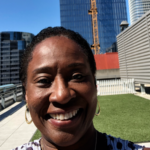
Cynthia: What's that ideal use case? So if I'm the business user, walk us through what your user would see.
Steve: We look at this on a couple of levels. Just at a platform level, being able to answer the question: "What's happening on my platform right now? Is someone having a big day? Is the platform doing well?" Being able to answer that question is really important. That's how we've been contextualizing any errors or issues that we're having specifically around the customer.
But we're also starting to pump more product-level data into it, because we have this Insights dashboard, which is very powerful. Rather than having everyone look for information in seven different spots, let's put it into one spot. We have a concept called “streams,” which are little widgets that are going to be embedded into our customers' pages. This is going to show how much activity is being driven through them.
When they're having a big day, they might have 50 times the number of end users visiting them. That's a great time for a CSM to say, "Hey, you know what? You're having a big day. I should go reach out to you, see what's happening, see how else we can help you out."
Cynthia: That's great—it sounds like this allows you to really tighten and deepen the customer engagement part of your business.
Steve: Exactly. The big theme for us is that we have a ton of data. How do we turn that into actionable conversations?
Using data to fight churn
Fredric: Has that affected your customer relationships? Have you increased business with key customers or gained new customers because of your ability to do this?
Steve: The bigger focus around this, especially being in the mar-tech space, has been around churn. That's one of our big themes here. We'll get questions from our customers like, "Did you even know we had an issue?"
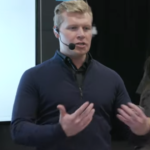
And we do know internally, but there's a large number of stakeholders that you want to keep on the same page. You have CSMs, you have support, you have product leads, you have the executives, you have the engineering side. How do you share all that information in a meaningful way? Just relying on Slack channels that engineers are pumping all the stuff into is not a great way for non-technical users to absorb what's happening, or for leaders who are looking after a number of different platforms.
Just as a simple example, some of our customers are using our platform for major corporate events; they could have 30,000-plus people on there. Now we can give this to our CSMs, and look at their Insights dashboard, and see how is it doing for this customer during this critical event?
I can watch that in real time, and then I can decide what to do with that. If there are concerns, I can reach out to them and talk to them about it—let them know what's going on. I'll know when the issue started, I'll know when the issue ended. And I don't need to be technical to do that. We can simplify those dashboards enough just to see spikes are bad, errors are bad. You can see when they start, they see when they finish.
Fredric: Spikes are bad, errors are bad. I'll try and remember that! How many people at ScribbleLive are using this information right now?
Steve: Our whole engineering team is using it, and we've rolled it out consistently across our platforms. That's a big part for us from the engineering side, just to make sure that, "Look, this is the right way to do it. This is how you run a SaaS platform. Everyone do it the same way." It makes it easy for everyone to get on board and troubleshoot things the same way.
In 2018, we started rolling out to our support teams as well, to give them the right level of information to do first-level incident discovery. Try to figure out what’s going on so by the time the incident hits engineering, we've got a really good view of what the issue is and where to look for it. That's where we find 90% of the time is actually wasted trying to solve these issues—identifying the root cause of the problem—and 5% or 10% to fix it. So it's very helpful for taking that load off of engineering and empowering our first-line support to help us out with that.
We've also been rolling out to our CSM support teams as well. They now have a chance to look at what's happening on the platform, and then they're starting to work with us for some of their larger customers. We're building out specific dashboards, so they can get a little more insight. Plus, we’ve installed a handful of TVs across the whole organization, so that everywhere you look you can see what's happening at the platform level and at a high-level for the customers.
A change-management exercise
Fredric: Are there barriers to making this happen? Is this something that the whole company knew that they would be interested in when you started to roll this out?
Steve: I wouldn't say the barriers are that large, but it is a change-management exercise. One key theme is that you want to have some internal champions— people that are driving it—and you want to have stakeholders from the other groups that are doing it.
From the engineering side, reach out and talk to people, and ask, "If I could give you anything, what would that be? If I could show you anything that you wanted to see—think outside the box, forget how we've done things before—tell me what would be useful for you?" Maybe even sit with them and shadow them, help them understand things, look at it through a different lens—watch some of the challenges they go through when they're working with a customer, when a customer has issues, when they need to reach out to them, or if they're just troubleshooting something with them when information is going back and forth.
The third part that's really helpful is having these initiatives supported from the top level. If things are important to the C-suite, if they're important to the leadership, people know they are big for the organization. Tell them what we're trying to do, why we're doing it, and who to talk to, and that they're supported, and they're encouraged to reach out to do that.
Fredric: What was the most surprising thing that the business asked for, in terms of the data they were looking at? Was there anything that stood out to you as in, "Wow, I didn't know they'd want that."
Steve: There are a number of things, but a lot of them are very specific to the customer. Actually, we're finding that a lot of our customers are trying to monitor us as well! They've been looking for ways we can share some of this information back. Can we create permalinks on some of these boards, and give them to our customers, so they can see what's happening? So they don't have to do the same activities, and they can have confidence that we know what's going on with our platform, and they can see it from similar views.
Giving the org more meaningful insights
Cynthia: And what's been people's reactions? Can you describe your internal teams? Were they happy about this? Did they see this as new work for them? Or did it give them that extra boost of confidence in terms of how they're engaging with the customers?
Steve: I think it's been a very positive response across the board because you're giving them more meaningful insights to talk about.
If you are a typical CSM at any SaaS company, you could have 50-plus customers in your portfolio. If you're going to call them up, what are you going to talk about? "Here's some new product features that are coming out," or, "Here's some stuff that's in our roadmap," or, "Here's a couple things I know we talked about before."
But what if you could contextualize that around their business? Things that matter to them, too. I think that's very meaningful in changing the conversation. We can tailor the information around the things that matter to our customers, so we understand what matters to their business, and why they're using us in the first place.
Fredric: Have there been measurable outcomes from this in terms of faster troubleshooting, or ultimately, lower churn?
Steve: In terms of troubleshooting, it's infinitely faster when you have New Relic set up properly. That’s not just installing it; you have to put the right data into it. You have to standardize what your errors are going to look like, put the right information in there, customize some error codes, add some contextualized business information, throw some product metrics up there. So there is a little work to do, but now you have the tools that can make everything visible to you and everyone else.
Once we put that in, we took issues that could take days before, or that we may not have been able to solve, and we're now able to fix them in a matter of minutes. And that’s on a platform with a billion-plus requests a day coming through it. That's a lot to deal with—when you have 25 microservices scaled out from 2 to 20 instances of each of them, and 100 terabytes of data. We're not Google size, but it's enough that we have scale issues.
We’re able to really drill down and say, “All right, despite all of this noise, what's really happening? What's meaningful? What do I need to go after? And how do I know when it's fixed? How do I know who it impacted? By making the changes we've talked about here, we're now able to do that in a matter of minutes.
I think the two key themes from this are: We don't have to go back to our customers and try and recreate the issue. We should already have that information, we should already know that it happened, be proactive about it, and then have a measurable way to say with confidence: "This is now solved."
That's a big part of what New Relic's brought for us, and it’s very important providing that level of confidence back to our customers—that we know what's going on, and we can stand by that. We know what happens, we know how to stop it, and we know when it's fixed.
Meaningful change in the right direction
Fredric: The other side of my question was whether you've noticed any quantifiable changes in your churn rates?
Steve: We've seen churn go down from that. We think it's really important towards driving stability. I don't have an exact number right now, but we are seeing meaningful change in the right direction. And I think this has been a big part of that.
Fredric: That's awesome. What do you hope the potential impact for the customer is on this? What do you hope they're going to get out of all this?
Steve: It's a better mutual relationship both ways. Understanding our customers—what they're trying to do, what's important to them, how we can help them with our platform, and how we can best support them if there are any issues—is going to be really important as we're working together.
I think it's about having that relationship where we know when to reach out, how to reach out, and what we can do to help them.
The role of AI and other advanced technologies
Cynthia: I was thinking the timing was perfect to shift gears a little bit and look forward. Steve, what do you see as the role of AI and any other new technologies that you might be looking at in the future to drive and increase your innovation transformation?
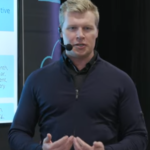
Steve: I think the first step is back to that theme around how do we take the heaps of data that we have and translate that into a meaningful business conversation. How do I take all this stuff that's been very engineering themed, and then turn it into a business lens, so that your platform for engineering is not a black box? It's contextualized around your customers, and there's some actionable insights from this.
When you have that set up, it's a lot easier to run some AI on the business side. I think it’s less about predicting when errors are going to come up—you have alerts for that, you have triggers for that. You want be able to solve it so that there just aren't errors in the first place, that's how you solve that problem.
The more interesting piece for me is, “How do I translate this information so it's important to all parts of the business?” That's when some of that predictive AI becomes a little bit more interesting.
Fredric: Stepping beyond the technology for a second, what do you see as the next step for this process of gathering data and sharing it widely throughout your organization and with customers?
Steve: I think there are two big parts that are very interesting for New Relic and how do you run a SaaS platform in general. One of them is, okay, take the information that we have, and put a different persona lens on it: “How do I make this meaningful to everyone outside of the org?
When you say, “I want to be a data-driven org,” it doesn't just mean looking at the data and making all of our decisions based on that. But you do want to be informed by that, you want it in front of everyone all the time, so they're seeing it, so they're thinking about it.
One of the big things that I'd be really excited to see more companies doing is asking whether there’s a way to demystify the platform and what's happening on it? When you walk into a C-suite meeting, are tools like New Relic right there at the forefront? Is that one of the first things that you look at and you talk about when you're trying to figure out what do we do next, and what's happening right now?
Fredric: Any tips on what New Relic can do to make the data that you're generating in New Relic more accessible to that C suite?
Steve: I think a big part of that is expanding the use case of this dashboard and allowing us to be able to put our own custom metrics into it.
You have really nice integrations with other platforms, you have really good integrations with the overall New Relic suite. But how do we treat this just like a general dashboard, so that we can pump whatever information we need into there? It's not just looking at the performance metrics, which are things that are coming from New Relic, but activity metrics, adoption metrics. Tie that into things that are coming in from, say, your Salesforce CRM, so I can quantify the issue not just by here's the customers that are impacted, but here's the MRR that's impacted by this, here's the financial implications.
The more that we can turn that into a general business dashboard that has a couple of different lenses from the platform, to the product, to the engineering side, to even some leadership metrics, that makes it very powerful. It becomes the one-stop shop for everything that you would need to see about what's happening within the org within your platforms.
Transforming engineering from a cost center to a thought leader
Fredric: That makes a lot of sense, and I think that's the focus behind the developers' platform that we introduced last fall, developer.newrelic.com. Before we sign off though, what would you want to leave listeners to the podcast with? Is there a single point that would be a good takeaway from all this?
Steve: One of the most interesting themes going forward is trying to change the outlook of engineering from just being a cost center to really being a thought leader within the organization. With all the rich data and insights that you have, you really can enable the broader org to function differently and think differently about how they do their day-to-day operations, and how they can be better informed for those decisions.
You have to pay for these tools at the end of the day, If you can go back and say that this is actually how we're going to sell better, this is how we're going to better reduce our churn, that's a very different conversation. From the engineering side, it's a very interesting way to help roll this out within the org, get budgeted for it, and push this forward as a major initiative that's not just for engineering, but for the broader organization overall.
Fredric: You're talking about using IT for competitive advantage, not just as a cost center.
Steve: Exactly.
Fred: I love that. Cynthia, any other questions you'd like to ask?
First steps?
Cynthia: I do have one last question: Are there any first steps for companies that are just beginning to make this transformation?
Steve: I think the biggest first steps are to break down some of those barriers that you typically see in product companies between different groups. Reach out, talk to each other, and ask them, what do you want to see? What would be helpful?
One of the biggest first steps for that is take the data and demystify it. Get out of the, "This is too technical for me, I don't know what to do with this" mindset and contextualize that around the client. And then start those conversations, reach out to the groups, tell them you can help, let them ask for anything they want, and see what you can do with that.
If you like what you hear, be sure to subscribe to the New Relic Modern Software Podcast on iTunes, SoundCloud, or Stitcher.
Note: The intro music for the Modern Software Podcast is courtesy of Audionautix.
As opiniões expressas neste blog são de responsabilidade do autor e não refletem necessariamente as opiniões da New Relic. Todas as soluções oferecidas pelo autor são específicas do ambiente e não fazem parte das soluções comerciais ou do suporte oferecido pela New Relic. Junte-se a nós exclusivamente no Explorers Hub ( discuss.newrelic.com ) para perguntas e suporte relacionados a esta postagem do blog. Este blog pode conter links para conteúdo de sites de terceiros. Ao fornecer esses links, a New Relic não adota, garante, aprova ou endossa as informações, visualizações ou produtos disponíveis em tais sites.


